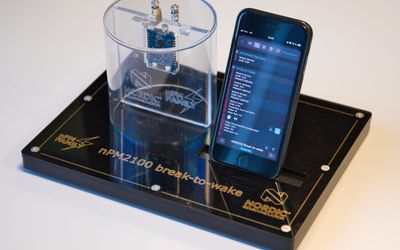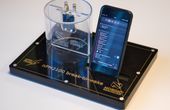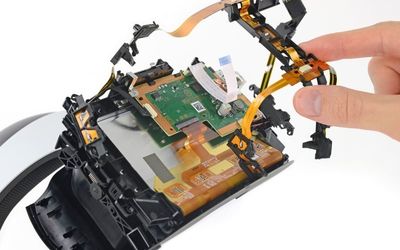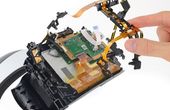IM72D128 XENSIV™ MEMS Microphone
An IP57 dust and water-resistant digital PDM XENSIV MEMS microphone with a high dynamic range.
Technical Specifications
| Product | Audio Microphone |
| Interfaces | Digital PDM |
| Sensitivity | -36 dBFS |
| SNR | 72 dB(A) |
| AOP | 128 dBSPL |
| Supply Voltage | 1.62 - 3.60 |
| Current Consumption | 980 |
Overview
IM72D128V01 is a high-performance digital microphone designed for applications that require low distortion (high AOP) and a high SNR (low self-noise). This microphone delivers high ingress protection (IP57) at the microphone level as it is based on Infineon’s new Sealed Dual Membrane MEMS technology. The performance of multi-microphone (array) applications is enhanced by tight manufacturing tolerance and the flat frequency response (20 Hz low-frequency roll-off). Different power modes can be chosen to meet specific clock frequencies and current consumption needs. The microphone is built for applications requiring high SNR (low self-noise), high reliability, and long battery life.
XENSIV™ MEMS microphone
XENSIV™ MEMS microphones are known for their low self-noise (high SNR), tight part-to-part phase and sensitivity matching, flat frequency response with a low LFRO, ultra-low group delay, and low distortions (THD) even at high sound pressure levels (SPL). Infineon XENSIV™ MEMS microphones are used for industrial applications like predictive maintenance and security due to their adjustable power modes and compact package size. These are also used for consumer electronics with high audio-capturing functionalities.
MEMS microphones combine a membrane and an electrically charged backplate to create a capacitive sound transducer. The flexible membrane moves proportional to the frequency and amplitude of incoming sound waves. An integrated analog or digital ASIC measures, processes, and outputs the resulting voltage change. IM72D128 is based on MEMS Sealed Dual Membrane technology.
MEMS Sealed Dual Membrane (SDM) microphone technology from Infineon uses two membranes, a charged stator, and a sealed low-pressure cavity, to produce a differential output signal. The architecture provides strong ingress protection (IP57) at the microphone level, enabling extremely high SNR (up to 75dBSNR) and minimal distortions. SDM is a favorable technology for quality acoustic performance in medium and larger packages.
IM72D128V01 Features
IM72D128V01 is a high-performance digital PDM MEMS microphone that is IP57 resistant to dust and water. It is designed for applications that demand a high SNR (low self-noise), low distortion (high AOP), and low noise levels. High microphone SNR keeps the noise floor inaudible even when the signal is amplified. IM72D128 is a microphone with low self-noise and high SNR (72dB), enabling far-field and low-volume audio pick-up.
The performance of multi-microphone (array) applications is enhanced by the flat frequency response (20Hz low-frequency roll-off) and tight manufacturing tolerance. The digital microphone ASIC contains a high-performance sigma-delta ADC and an extremely low-noise preamplifier. Users can choose different power modes to meet specific criteria for clock frequency and current consumption. There are selectable power modes for battery-critical applications (980/280µA).
Low sensitivity tolerances (1dB) are achieved as each IM72D128V01 microphone is calibrated with an advanced Infineon calibration algorithm. The microphone offers a low group delay (7µs @ 1kHz). It also enables advanced audio features, including audio zoom, ANC, beamforming, and transparent hearing. The package is delivered in tape and reel, offering high protection against damage, dust, and ESD.
Applications
IM72D128 is perfect for applications such as laptops, tablets, conference systems and devices with Voice User Interface (VUI).
Other potential applications include smart speakers, laptops and tablets, home automation, conference systems, IOT devices, cameras and camcorders, and industrial or home monitoring with audio pattern detection.








